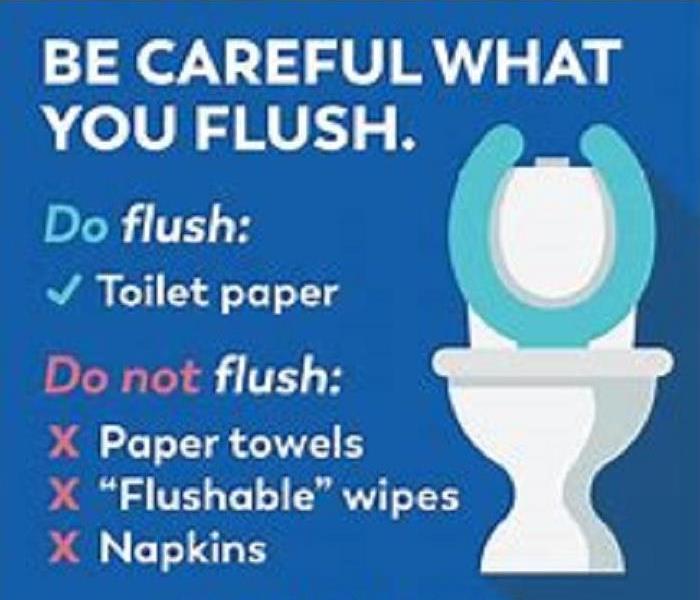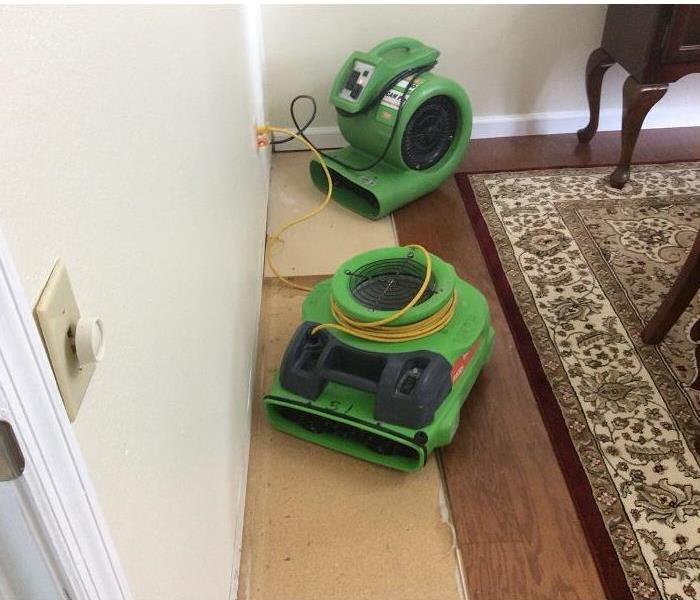Archived Water Damage Blog Posts
How to Deal With Commercial Water Damage to Your Business | SERVPRO® of Overland/Cool Valley
8/11/2023 (Permalink)
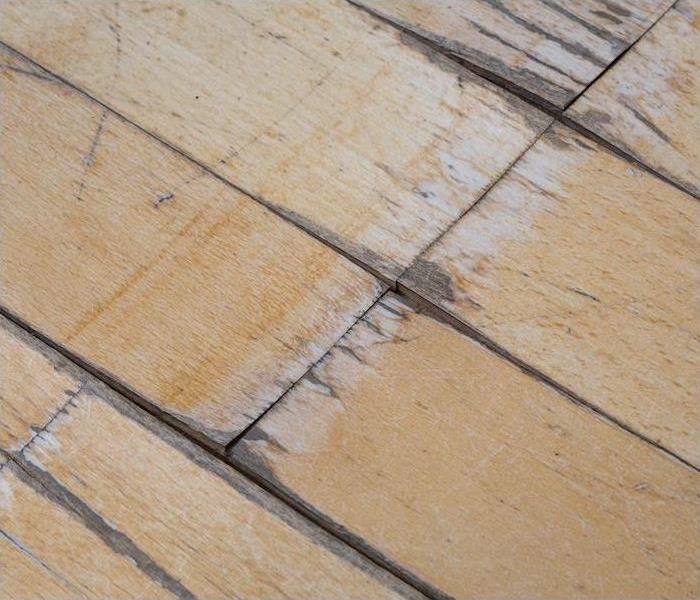 SERVPRO of Overland/Cool Valley is your local commercial water restoration company. We will always be here to help and get you back in business.
SERVPRO of Overland/Cool Valley is your local commercial water restoration company. We will always be here to help and get you back in business.
When commercial water damage affects your building, the impact on business can be severe.
Many sources of flooding come from internal sources. Burst pipes or a badly leaking roof can shut you down or ruin interiors and destroy inventory. Damage might also come from a bathroom flooded with sewage backup. Or it could even be an entire floor of offices soaked by a broken sprinkler system.
However, water damage can also affect businesses through natural causes.
Overland business owners should be ready for floodwaters caused by torrential rain, overflowing rivers and even melting snow.
No matter the source, a water-damaged business can be a hectic situation to navigate. Understanding how to respond is the greatest method to make sure that emergencies like this are handled quickly and effectively.
Knowing what to do before disaster strikes make recovering quickly and returning to business easier. Regardless of what source left the water behind, these helpful tips can guide you through handling the problem quickly and as stress-free as possible.
Know Your Building’s Layout
Familiarize yourself with different water cutoff points throughout your property, and ensure you know how to turn off the fire sprinkler system. Locate the main water cutoff valve, and be ready to shut off the entire building’s supply when necessary.
Several people should know this information, including members of the leadership team. This can help you reduce the amount of water that gets inside your business by cutting it off at the source.
Know the Types of Water Involved
When water damage happens, the type of water involved will determine how dangerous the situation is. Knowing what you’re dealing with makes a big difference in the safety of everyone in the building:
White water: This type of water most commonly results from plumbing problems. It’s not considered contaminated and is safe to handle yourself in small amounts.
Gray water: Sink drains and toilet tank overflows produce this type of flooding. The water is contaminated but not considered dangerous.
Black water: Sewage backups and storm flooding are common sources of highly contaminated black water. Always call in a professional to deal with this type of toxic water damage.
Take Action Quickly
Always attempt to identify and shut down the water source as soon as possible. Try to get fresh air circulating by opening windows and doors to expedite the drying and evaporation process. Then alert everyone in the building and outline the affected areas so that no one comes into contact with the water.
After taking these steps, be sure to thoroughly document any visible damage. This will help you speed through the insurance claim process and will be useful when deciding what parts of your building need the most reinforcement.
Remember to Be Patient
The visible water damage in your building is only part of the overall problem. Soaked wall studs, moldy framing and buckled flooring materials are only a few signs of hidden water damage. Any of these indicators should be red flags of potential damage.
If your business experiences water damage, call SERVPRO of Overland/Cool Valley for a quick response and a shoulder to lean on. Our restoration professionals have extensive training and will work with industry-leading equipment that can dry your building out and get you back into action fast.
The cleanup and drying process can take up to a week, depending on the extent of the moisture, so be patient as our restoration team works through the cleanup and sanitation before beginning repairs. We’ll have your business back to preloss condition before you know it.
When disaster strikes your commercial property, we’ll be there to help clean up and get you back in business quickly. Call SERVPRO of Overland/Cool Valley today at (314) 279-5600.
How to Deal With Flood Damage | SERVPRO of Overland/Cool Valley
6/28/2023 (Permalink)
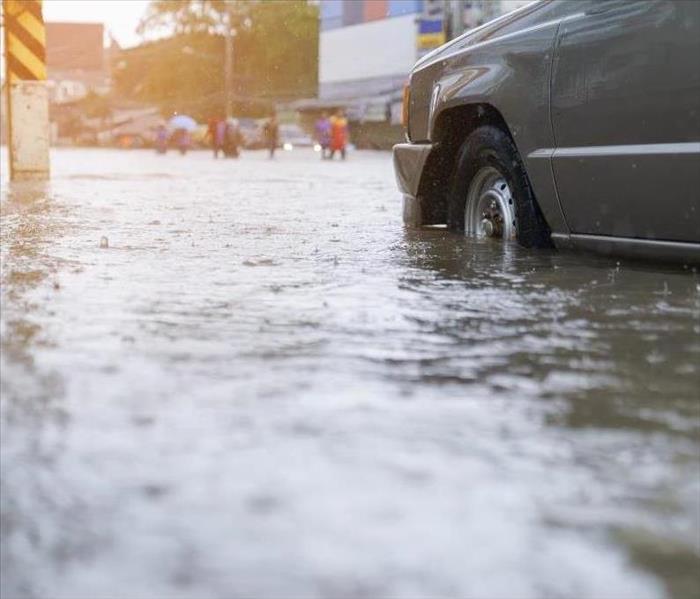 SERVPRO of Overland/Cool Valley is here to help with flood damage
SERVPRO of Overland/Cool Valley is here to help with flood damage
Floods can be devastating natural disasters, wreaking havoc on homes and properties. Recovering from flood damage requires a well-structured and organized approach to minimize further loss and restore your property to its pre-flood condition. In this article, we will provide you with a comprehensive guide on how to handle flood damage effectively. By following these steps, you can navigate the restoration process more efficiently and ensure the safety and well-being of your home and family.
Step 1: Ensure Safety
Before entering your home or property after a flood, prioritize safety. Ensure that the floodwaters have fully receded and it is safe to return. Be cautious of structural damage and potential electrical hazards. Wear appropriate protective gear such as rubber gloves, boots, and face masks to avoid exposure to contaminants in the water.
Step 2: Document the Damage
Once it is safe to enter your property, thoroughly document the flood damage. Take photographs or videos of all affected areas, including structural damage, personal belongings, and appliances. This documentation will be invaluable for insurance claims and aid in the restoration process.
Step 3: Contact Your Insurance Company
Notify your insurance company about the flood damage as soon as possible. Provide them with all necessary details, including the extent of the damage, photographs, and videos. Understand your insurance policy and coverage to ensure you are aware of what is eligible for compensation.
Step 4: Disconnect Utilities
For safety reasons, turn off the main power supply to your property. Additionally, shut off the gas and water supplies to prevent further damage and potential hazards. Contact the appropriate utility companies if you require assistance with these procedures.
Step 5: Remove Standing Water
Begin by removing any standing water from your property. Use pumps, wet/dry vacuums, or hire professional water extraction services if necessary. Properly dispose of the water to prevent contamination and further damage.
Step 6: Dry and Ventilate the Property
After removing the standing water, it is crucial to dry out your home or property thoroughly. Open windows and doors to promote air circulation, and use dehumidifiers, fans, and heaters to expedite the drying process. Remove wet carpets, furniture, and other items that can harbor moisture.
Step 7: Clean and Disinfect
Floodwaters can introduce harmful contaminants and pathogens to your home. Clean and disinfect all affected surfaces, including walls, floors, and furniture. Use appropriate cleaning agents, wear protective gear, and follow manufacturer instructions for effective disinfection.
Step 8: Remove Damaged Materials
Inspect your property for damaged materials that need to be removed. This may include drywall, insulation, flooring, and furniture. Discard damaged items properly, following local regulations, and keep a detailed inventory of all disposed of belongings for insurance purposes.
Step 9: Repair and Restore
With the damaged materials removed, assess the structural integrity of your property. Repair any structural damage, including walls, floors, and roofs, with the help of professionals if necessary. Ensure that repairs comply with building codes and regulations.
Step 10: Seek Professional Assistance
Depending on the severity of the flood damage, you may need to engage professional restoration services. Experienced flood damage restoration companies, like SERVPRO of Overland/Cool Valley, can provide expertise and specialized equipment to expedite the restoration process and mitigate further damage.
Step 11: Evaluate and Enhance Future Protection
As you restore your property, take the opportunity to evaluate your flood protection measures. Consider implementing strategies such as installing flood barriers, elevating electrical systems, sealing foundation cracks, and landscaping changes to divert water away from your property. Consult with experts or local authorities for guidance on flood mitigation.
Protect Your Home From Water Damage | SERVPRO of Overland/Cool Valley
5/25/2023 (Permalink)
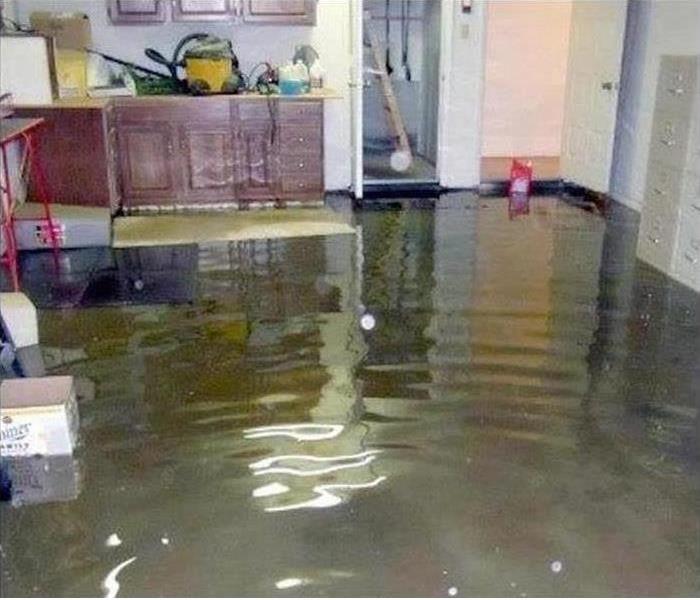 Call SERVPRO of Overland/Cool Valley for water damage restoration.
Call SERVPRO of Overland/Cool Valley for water damage restoration.
There are many ways to help protect your Overland/Cool Valley home from water damage. Water losses occur when water finds its way outside of the appliances you rely on to run your household’s daily needs. When we think about the causes of severe water damage to our homes, we usually think about extreme weather like a hurricane or torrential rains. But the unfortunate reality is that extensive damage is often the result of ordinary household plumbing systems and appliances that fail – and these can be just as destructive to your home as an extreme weather event.
Preventative Measures
Fortunately, there are steps that you can take to help prevent water damage from plumbing problem in your Overland/Cool Valley home. It is helpful to understand some of the common causes of water damage.
These may include:
• Heating and air-conditioning systems
• Water heaters
• Valves
• Appliances
• Pipes and plumbing fixtures
How to Detect Water Damages
Water damage can often go undetected, even if the telltale signs are there. Plumbing that is housed inside the walls of your home, in less-trafficked areas like a basement or attic, or behind a cabinet or appliance, can easily go unnoticed. That’s why it’s important to check your appliances and plumbing from time to time.
- Know where the main water supply enters your home, locate the main shut-off valve and make sure it’s functioning properly.
- If you will be away from home for an extended period, consider shutting off the water supply, but consult with a heating professional first to understand if doing so will compromise any other systems in your home. Maintain a temperature of at least 55 degrees in your home. Also, if your home is protected by a fire sprinkler system, do not turn off the water to this system, and maintain sufficient heat to prevent a freeze-up.
- Consider having your air-conditioning system inspected regularly by a professional. Check around the unit for indications of leaks. Check the drain lines annually and clean them if they are clogged. Change the air filter annually at a minimum.
- Inspect water heaters, showers, tubs, toilets, sinks, dishwashers, refrigerators and washing machines annually, and have them repaired if there are signs of leaks or corrosion. Be sure to include supply lines, hoses, connections and fittings in the inspection.
- Check caulking around showers, bathtubs, sinks and toilet bases, and make repairs as needed.
- If your refrigerator has an ice machine or water dispenser, check the hose between the wall and the refrigerator to determine if it is pinched or stressed. Also look for signs of leaking or wear and tear.
- Check exposed plumbing (pipes, valves, etc.) for signs of leaking or corrosion. Have any pipe damage fixed immediately to prevent more costly repairs in the future.
For any questions or concerns about water damage in your home, call SERVPRO of Overland/Cool Valley at (314) 949-7824.
Water damage due to a plumbing issue in your home can be life-changing. But there are some common signs that homeowners can look for, and steps they can take, to help avoid a major water issue at home.
Consider this example:
A homeowner and his family head off for a three-week vacation. While they’re away, a minor toilet leak grows, until it reaches a pace of three gallons of water per minute. By the time the homeowners returned from their three-week vacation, the unaddressed leak had poured more than 30,000 gallons of water into their home. The water ruined furniture, fixtures and irreplaceable family valuables, and rendered the property virtually uninhabitable for an extended period of time.
But this is just a cautionary tale. The following guidance is meant to help you learn about the potential water issues from common plumbing problems and how you can take steps to help prevent disaster.
Causes For Plumbing Problems
Plumbing issues can occur anywhere in your home. Frequently, lack of maintenance is the root cause of these problems. However, other causes can include:
- Manufacturing and design defects.
- Installation errors.
- Exposure to cleaning products (for example, by storing chemicals under the sink or by cleaning surfaces of plumbing components).
If caught early, many plumbing problems can be addressed before serious damage occurs. For this reason, regular inspection of your home’s visible plumbing parts can be critical. Knowing the lifespan of parts and appliances is also important, as is properly maintaining the other parts of your home and its features and systems.
Signs to Look For
Want to help prevent plumbing complications from damaging your home and potentially resulting in expensive property damage or loss? Start by visually inspecting your plumbing on a regular basis. Look for drips and slow leaks. Be sure to check the areas surrounding your pipes as well. If you see water damage on cabinetry or other nearby materials, there may be an active leak that you’ll want to locate.
Your entire home plumbing system may not be visible, but there are certain places in your home where you can readily inspect plumbing components:
- Under sinks and washtubs.
- Inside access panels near showers, sinks or appliances.
- Attachments to toilets, water heaters and appliances.
- Basements and crawl spaces.
You will want to look at any piping, valves and fittings in the areas listed above. Leaks are most common at connection points, so pay close attention to the plumbing connections on faucets, washing machines, refrigerators, dishwashers, water heaters, water filtration systems, shut-off valves and toilets. Your home’s piping system may also have multiple connections between various sections of pipe. Appliances and fixtures themselves can cause problems, so be sure to inspect those as well, and keep up with any regular maintenance recommended by the manufacturer.
The signs of a problem will vary by component. For example, problems in copper piping may look very different from problems in PEX, a common type of plastic piping. In general, you want to look for signs of corrosion, cracking, hazing, discoloration and mineral deposits from a water leak.
For any questions or concerns about water damage in your home, call SERVPRO of Overland/Cool Valley at (314) 949-7824.
Be Prepared: Locate Your Water Shut Off Valve
2/4/2021 (Permalink)
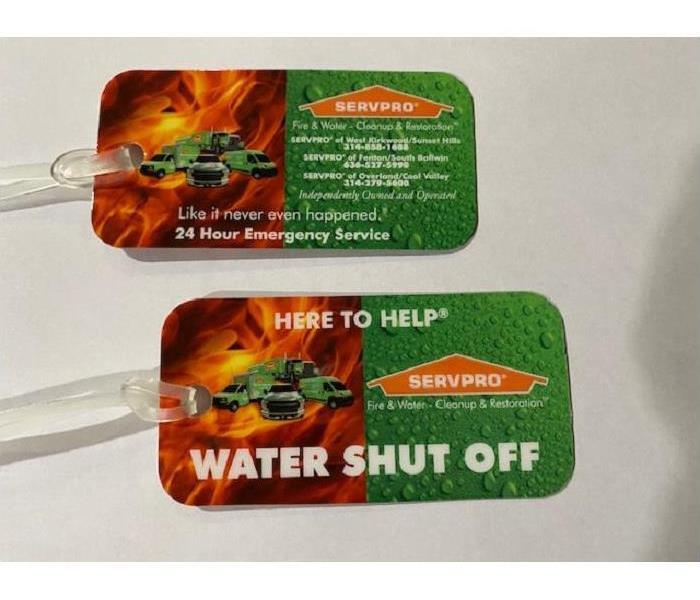 Be Prepared BEFORE Disaster Strikes!!
Be Prepared BEFORE Disaster Strikes!!
Water gushing uncontrollably through your house or business is hazardous, unsafe, and will quickly cause major flood damage. If that water is coming from your home's own water supply, and not from outside sources, you can and should shut it down very fast. NOW is the time to locate your Water Shut Off Valve. Once found, make this known to all family members as they may be home alone when disaster strikes! Our office offers FREE Shut Off Tags that you can place as a reminder to all. The quicker the water supply is shut off the less damage to your home or business.
Three Ways to Quickly Locate the Water Shut Off Valve
Find the Water Shut Off Valve on the Inside Perimeter
The first step is to physically search for your house's main water shut off valve on the inside of the home. Typically, it will be located on the perimeter of the house since that is where the water first enters your house. Also, stay on the side of the house that is facing the street. Your water main begins at the street and heads in a straight line to your home. When you find the valve, turn the handle or knife-style valve.
Find the Shut Off Valve on Your Property Inspection Report
If you still cannot find the cut off valve after physically searching for it, one alternative is to check the property inspection report that was completed for you when you were in the final phases of purchasing your home. Look in the plumbing section of the report. This section should locate the shut-off valve for you and have a photo of the valve. Even if the water system was not defective at the time of the property inspection report, the report should still note the locate the shut-off valve as a matter of course.
Find the StreetSide Shut Off Valve
If the previous methods fail, there is another valve located at the beginning of your water main, at the boundary line of your property and the street or sidewalk. Find the ground-level metal or plastic utility box trap door located at ground level. Call the water company's 24-hour emergency contact line. Staff may direct you to shut off the valve by yourself or to wait for an emergency dispatch team.
Call our office at 314-279-5600 or email us at office@sevprokirkwood.com to request your FREE Shut Off Tag!!! #SERVPROOVERLANDCOOLVALLEY
What's Safe to Flush or Drain?
5/12/2020 (Permalink)
What’s Safe to Flush or Drain?
Disposing of the wrong items in a toilet or drain can cause blockages and slow drainage, flooding, and hazardous sewage back-ups into your home or yard. Fixing them can require costly and disruptive repairs for you and contributes to sewer rate increases for the whole community. Don’t let your hard-earned money go down the drain. Follow these guidelines at home and work.
The sewer pipes that serve the toilet, shower, bath, sinks, washing machine, and floor drains in your home or business are designed to carry only three things: human body waste, toilet paper, and wastewater. When other items are put down the drain, they can combine to cause clogs, put additional stress on the pipes, or get caught up in our wastewater treatment facilities. This material then needs to be trucked to a landfill, causing extra work and expense, and higher rates for customers.
Don't Flush or Drain (Just to name a few!)
- Bones
- Bread Dough
- Butter
- Coffee Grounds
- Eggshells
- Gravy
- Paper Towels
- Rubber Bands
- Tampons
- Wet Wipes
DO
- Place a wastebasket in your bathroom for disposing non-flushable items.
- Place liquid cooking fats, oil and grease into a container with a lid and dispose of in trash.
- Wipe down greasy pots, pans and dishes before washing.
- Have your sewer rodded or snaked regularly.
- Dispose of old medicines or drugs at an approved drug take-back site or event.
- Dispose of motor oil, paint, grease or other dangerous fluids at the St. Louis Household Hazardous Waste collection facility.
If your home or business sustains a backup we are here to help 24/7/365 days!!! Call SERVPRO of Overland/Cool Valley 314-279-5600
Air Movement in Drying
5/6/2020 (Permalink)
Two aspects of air movement influence evaporation of moisture from materials.
- Velocity- The speed of the air moving across surfaces.
- Volume- The quantity or amount of air moving during a period of time.
Velocity is a multiplier in the evaporation process, multiplying the rate that evaporation occurs. The velocity of airflow is comparable to wind speed. Higher wind speed will result in higher evaporation rates. Likewise, the faster the velocity of air moving over a wet surface, the better the rate of evaporation will be. Velocity is measured in feet per second (FPS), feet per minute (FPM), or miles per hour (MPH), and can be determined using an anemometer.
Volume is critical to the circulation of air. Airflow used for drying must have high wind speed, but that wind must be dry air. The source of dry air usually is a mechanical dehumidifier, though it could be the outdoor environment. Regardless of source, the dry air must be distributed or circulated throughout the affected area, much like the heated or cooled air from a home air handling system must be distributed throughout.
Moving air from one location to another is a product of mass, or volume, and is usually expressed in Cubic feet per Minute (CFM). We measure air movers in terms of CFM to indicate how much air the air mover is able to move around.
Restorers can better control air movement when they understand the roles of air volume and air velocity. Volume is not velocity. Adequate velocity is critical for increasing the rate of evaporation. Adequate volume is important when trying to circulate wet, dry air throughout especially large and complex structures.
SERVPRO of Overland/Cool Valley professionals are here to help with all your drying needs.
 SERVPRO of Overland/Cool Valley is your local commercial water restoration company. We will always be here to help and get you back in business.
SERVPRO of Overland/Cool Valley is your local commercial water restoration company. We will always be here to help and get you back in business.



 24/7 Emergency Service
24/7 Emergency Service



